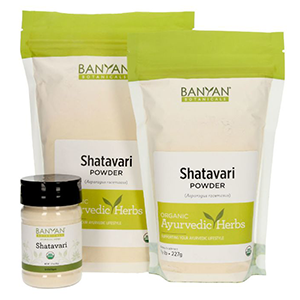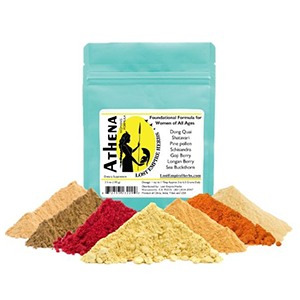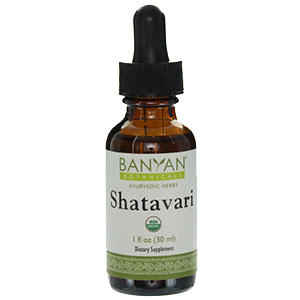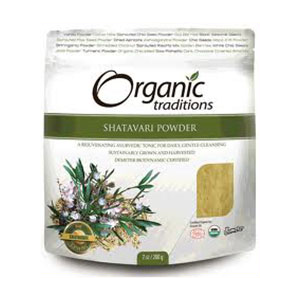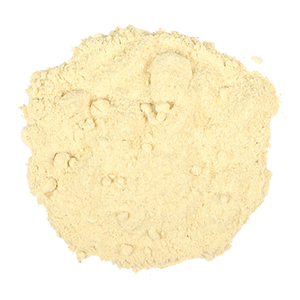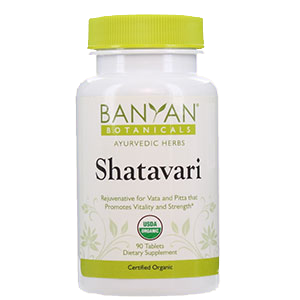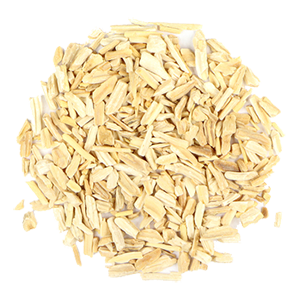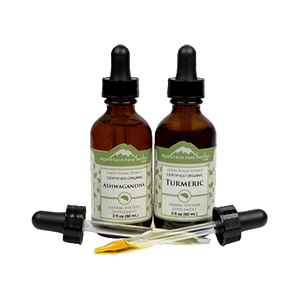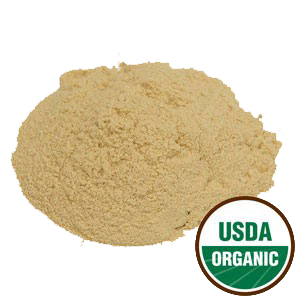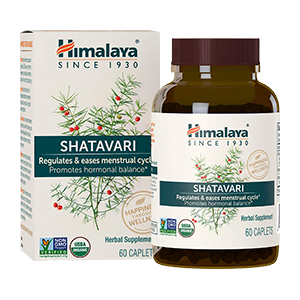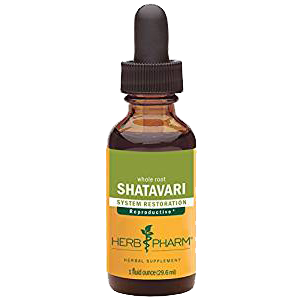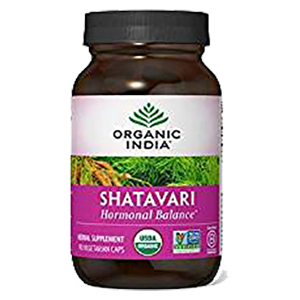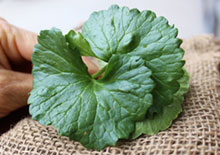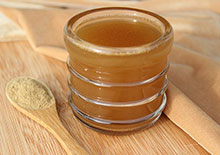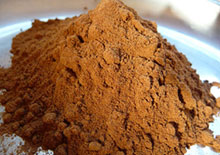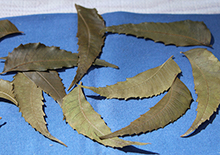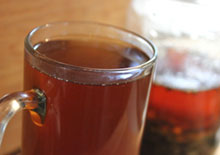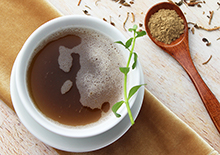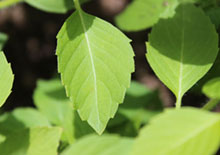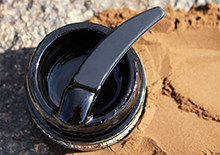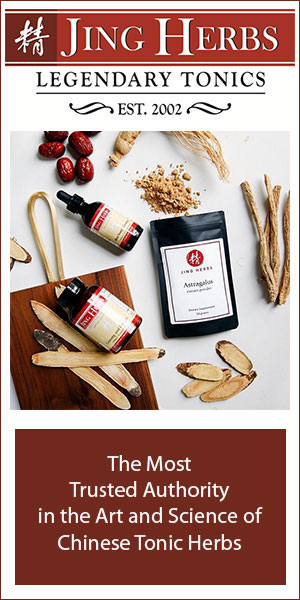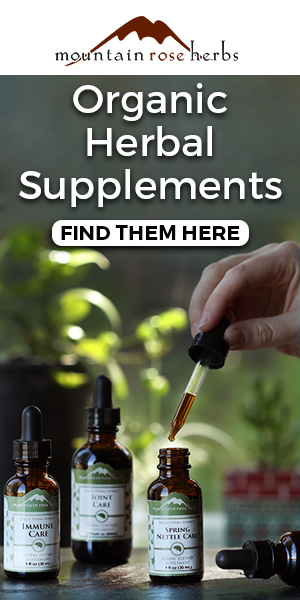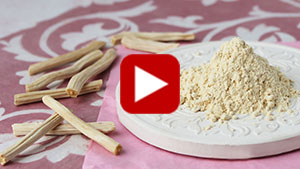- Home
- Ayurvedic Herbs
- Shatavari Root
Shatavari Root, Traditional Ayurvedic Herb for Women
Intro | What is Shatavari? | Major Compounds | Top 4 Benefits | Grow Your Own | How to Use | Precautions | Shop
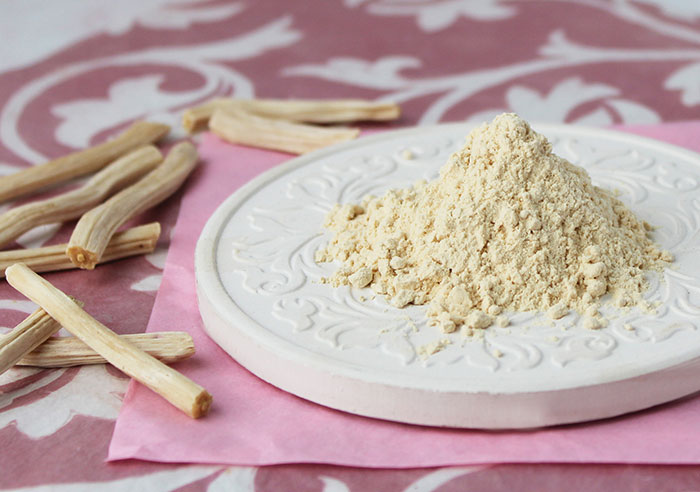
Shatavari is one of the top herbal rasayanas in traditional Ayurvedic medicine and is highly valued for its supportive influence to women and the various phases of the female life cycle.
In the Western U.S., shatavari is frequently pronounced shat-a-vari, however, the Indian English pronunciation sha-tav-ree is also commonly used.
Shatavari or Asparagus racemosus comes from the Asparagus genus and the same family as Asparagus officinalis or the common asparagus vegetable. Different from garden asparagus, shatavari as an herbal substance is primarily sourced from the ROOT or plant tuber. The general term "shatavari" is usually referring to this portion of the plant.
Table of Contents
Intro | What is Shatavari? | Major Compounds | Top 4 Benefits | Grow Your Own | How to Use | Precautions | Shop
Composed of a prolifically growing root system, the name shatavari comes from the Sanskrit words 'shat' (meaning 100), 'avar' (meaning below) and 'vri' (meaning root). Its literal translation is "one hundred roots below", but is also famed as "she who possesses a hundred husbands" because of other references we will soon discuss.
In Ayurveda, it is described to be Sattvic in quality and is said to promote love and devotion. Known as the "queen of herbs" for its affinity to the female system, it is often compared to ashwagandha the "king of herbs" which is primarily viewed as a male tonic. Both of these roots, however, can be utilized by or be of benefit to either gender.
What is Shatavari?
Shatavari, also called satavar and shatawari, is native to the Indian subcontinent where it can thrive in a wide range of environments from the humid tropics of Sri Lanka to the arid conditions of the Himalayan foothills.
The Asparagus racemosus plant itself is a thorny climbing perennial species from the
family Asparagaceae (recently moved from the family Liliaceae) and has
finely branched feathery leaves or phylloclades, tiny white flowers and dark purple berries.
It is famous for its thick long
juicy tuberous roots that can grow about 1 meter or 3 feet in length and produce a mass of close to 100
roots by the time it's ready for harvest after about 18 months.
Although shatavari grows wild, it is currently identified in some regions as an endangered species because of overharvesting and deforestation. (Source)
Most shatavari root comes from India and is, therefore, cultivated. The succulent tubers have a whitish center and are frequently peeled, then chopped, dried and ground as a bulk powder that can be mixed into drinks, tea or (as in Ayurvedic tradition) blended with milk or ghee.
It is also a popular type of herb to use in numerous tonic formulations or is likewise incorporated with Western and Chinese herbs in women’s herbal supplements, like one of our favorites called Athena Woman's Formula, a combination of tonic extracts and powders. This product, by Lost Empire Herbs, incidentally also includes the top Chinese varieties for women such as dong quai and the famous "three sisters", schizandra, goji and longan.
Shatavari is described in Ayurvedic terms to be energetically cooling with a sweet bitter taste and a quality that is unctuous and heavy. It is pacifying to both Pitta and Vata but may aggravate Kapha when used in excess.
You can purchase the straight powder or utilize the root pieces which can be ground fresh in a high-speed blender for making your own powders.
We personally prefer and recommend higher quality sustainably and/or organically cultivated varieties over other low-quality products that may use synthetic chemicals or pesticides, which can become concentrated when powdered.
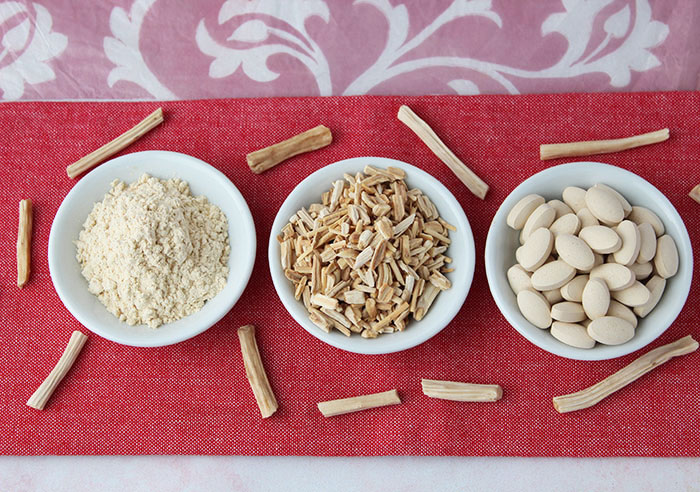
Shatavari Root's Major Compounds
The main pharmacological compounds in shatavari roots are:
- Saponins
- Alkaloids
- Mucilage
These are all the substances that give shatavari root its rich "tonic-herbal" taste that is reminiscent of other herbs in this category.
The STEROIDAL SAPONINS are considered the major active constituents identified in research. These include SHATAVARINS (shatavarins I-IV) and SARSASAPOGENIN.
Top 4 Benefits of Shatavari for Women
1) A Long Regarded Female Reproductive Tonic
2) An Aphrodisiac for Healthy Female Libido
3) For Herbal Support During Menopause
4) A Sattvic Tonic with a Calming Influence
1) A Long Regarded Female Reproductive Tonic
Shatavari root is probably one of the most well-known Ayurvedic herbs for its supportive influence on the health and maintenance of the female reproductive system. It is often one of the top herbs used in formulations specific to nurturing a women's reproductive tissues and menstrual cycle otherwise known as Artava or Artavachakra in Ayurveda, meaning "wheel or a cycle which works repeatedly." (*)
As a nourishing reproductive tonic, shatavari powder, supplements and teas are often recommended for promoting healthy female menstruation and encouraging greater hormonal balance. In Ayurvedic traditions, it is believed to encourage fertility.
The roots have a cooling demulcent quality which can help to provide soothing actions as an anti-inflammatory agent, especially for the procreative organs. It is additionally a diuretic, a property which can help to relieve bloating and fluid retention.
Note: When considering shatavari's use as an herbal supplement for specific health concerns, it may be helpful to seek the guidance of a qualified Ayurvedic Health Counselor, who can further evaluate your individual constitution and advise an herbal therapy protocol based on specific health issues.
Known to help nourish the blood, normalize blood flow and ease PMS, some Ayurvedic practitioners also refer to shatavari as a blood and uterine tonic and menstrual regulator.
In some 2018 reviewed research, it was proposed that shatavari might be supportive to certain female reproductive health issues.
Like many tonic herbs, shatavari root is high in steroidal saponins, this is the component that gives the root its primary sweet and secondary bitter tastes. Although capsules can be a convenient way to take the powder or extracts, in our opinion tasting the herb in the mouth is a good practice for optimal uptake. Bulk powders, tablets and liquid extracts can, therefore, be a better option to achieve this objective.
2) Shatavari Root, An Aphrodisiac for Healthy Female Libido
Shatavari and its traditional reference, "she who possesses a hundred husbands", is claimed to be a result of its potentially rejuvenating impact on the female reproductive organs and glands which (from a male perspective) can be an attractive feature for creating many offspring.
This, however, also may have something to do with the roots reported reputation as a libido-enhancing tonic and chance at increasing sexual desire. This is often the case with rasayana herbs, like mucuna, ashwagandha, amalaki, gokshura and many others, as they are known to have revitalizing qualities as aphrodisiacs.
Likewise, shatavari root as an herbal supplement is considered a type of unctuous building food that can enhance "Ojas", a feature related to increased sexual fluids and secretions.
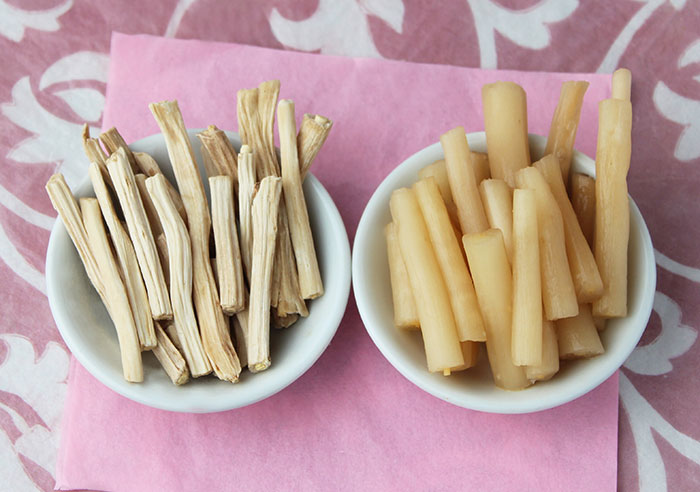
3) Shatavari Root for Herbal Support During Menopause
Shatavari root, with its cooling demulcent or moisturizing properties, is known to be supportive and nourishing to women during the various phases of menopause. This is a time in which women may experience hormonal changes, dryness and intermittent overheating.
Shatavari, commonly in powder form, is traditionally used in Ayurveda to influence hormonal balance. According to Vasant Lad in his book "The Complete Book of Ayurvedic Home Remedies", recommends rejuvenating herbs with "natural food precursors of estrogen and progesterone" for menopausal life stages. Of these substances, he mentions shatavari and wild yam to be most effective.
This is also supported by some scientific observation analyzing shatavari as a source of phytoestrogens. (*)
Again, the roots are very high in mucilage and can help to moisten dry conditions and soothe inflammation, both frequently identified as side-effects of menopause.
In one 2018 small-scale trial, published in the Journal of Herbal Medicine, testing an herbal combination including A. racemosus,
menopause symptoms like hot flushes and night sweats were reduced in
the active treatment group of healthy women between ages 40–65 after a
12-week period.
There are many other great herbs known to be especially tonifying during menopausal years. Along with shatavari root and wild yam, others may include dong quai, american ginseng and vitex. We always, however, recommend seeking the advice of a qualified herbalist or other health professional to more specifically evaluate individual scenarios before using these herbs for self-treatment.
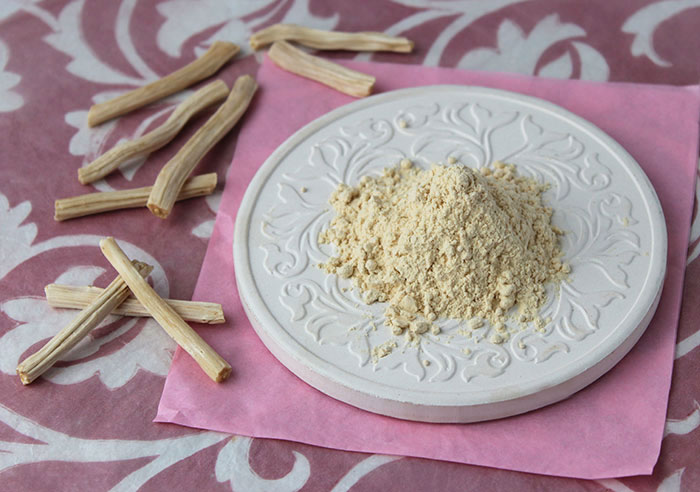
4) Shatavari, A Sattvic Tonic with a Calming Influence
Shatavari is sometimes used in Ayurvedic therapies as a supportive
nutritive tonic for the nervous system, especially for women. It is
often described to have a Sattvic quality which in Ayurveda is
referenced to embody characteristics such as purity, peace, harmony and
balance.
It can have a calming overall influence, similar to ashwagandha, and is likewise a popular ingredient in stress-reducing formulas and relaxing drink recipes. Like ashwagandha milk, it can be utilized as a powder mixed into milk (dairy or vegan).
Achieving good quality sleep on a regular basis is important for overall health over the course of our lifetime. A mug full of herbal infused and heated shatavari milk might be a helpful part of winding-down ritual.
Vata imbalances are known to have a major influence on nervous system related issues and shatavari, with its moistening and calming qualities, can be beneficial for dry and anxious Vata-like tendencies.
Ayurvedic practitioner Sebastian Pole, in his book "Ayurvedic Medicine", states that "It nourishes the majja dhatu and calms the nerves. It specifically nourishes the brain and reduces vata disorders; spasms, pain and insomnia."
In one study on rats, shatavari or Asparagus racemosus was identified to attenuate (reduce) anxiety-like behavior.
As an adaptogenic herb, with immune-modulating potential, it may be useful for cushioning the impacts of physical, emotional and environmental stress.
Shatavari root is not, however, considered a sedative but is rather a restoring rasayana herb known for its rejuvenating properties which can ultimately help to promote natural energy levels. It is used with other herbs, like goshura, ashwagandha, amla, long pepper and cardamom, in the traditional Ayurvedic rejuvenating and nutritive jam known as Chyawanprash.
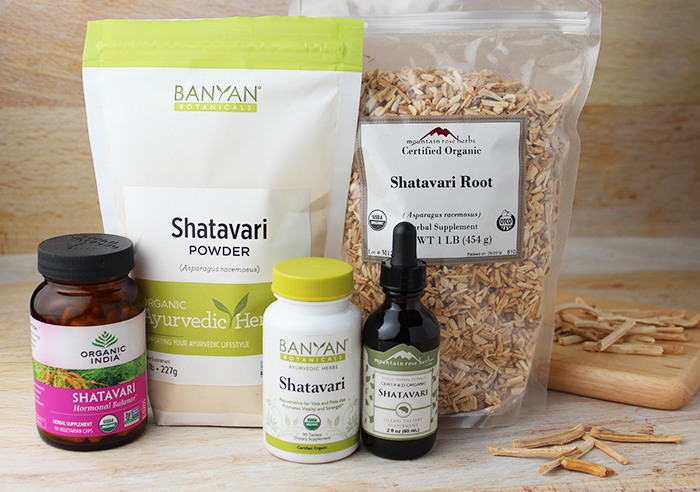 This website is an affiliate of Mountain Rose Herbs. The opinions expressed here, however, are completely our own.
This website is an affiliate of Mountain Rose Herbs. The opinions expressed here, however, are completely our own.How to Use
While it can be decocted or prepared as a powdered hot water extract, shatavari is traditionally used as a dried powder which can be added straight to hot beverages, water or teas. It is also available in tablet or capsule form or as a liquid alcohol extract or tincture.
In Ayurvedic customs, it is often prepared with milk, ghee, honey, digestive spices and or other herbs specific to certain health conditions.
Again, in our opinion, it is good to taste the herb on the tongue to help activate its medicinal components and promote greater absorbability. Or, as we once heard it put, "to encourage activation of the body's own inner pharmacy."
Standard dosage amounts for shatavari powder typically range between 1/4-1/2 teaspoon, but this can, of course, vary depending on individual scenarios. For shatavari supplements, we recommend following product labeling for dose amounts.
Precautions:
Shatavari root consumed in excess can increase Kapha conditions or cause imbalance to Kapha dominant constitutions. Seek the advice of a qualified medical professional before using shatavari if pregnant, nursing, taking prescribed medications or if you have a serious medical illness.
Shop Related Products (About Affiliates & Amazon Associate Paid Links)
Affiliate Disclaimer: This section contains affiliate product links. If you make a purchase through our recommended links, we receive a small commission at no additional cost to you. Thanks for the support.

